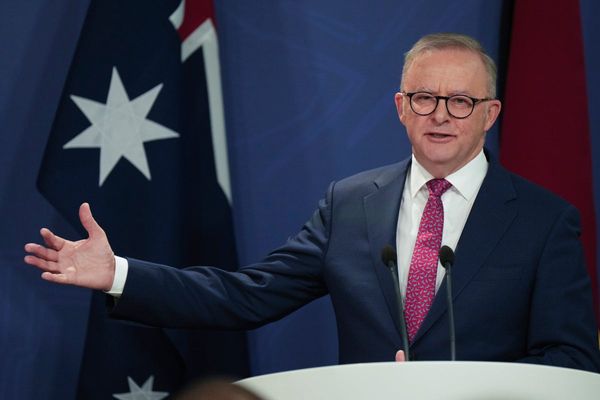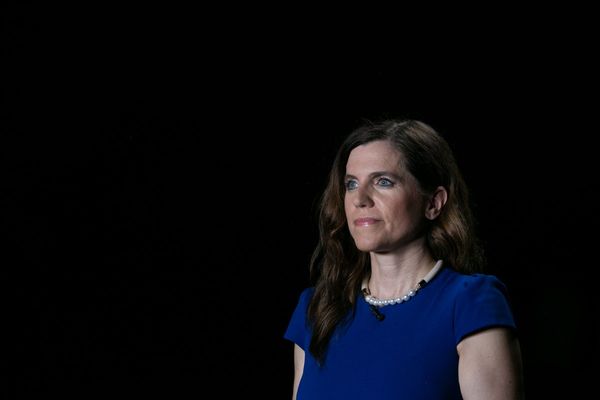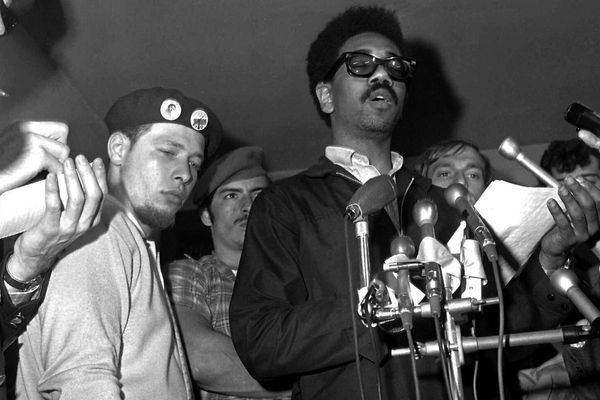
Most summits bill themselves as “historic” and those who attend invariably talk about “forging a new consensus”. But Nato’s Madrid summit can credibly make such claims, for there is no question that a military alliance that only a few years ago was famously dismissed by the French president, Emmanuel Macron, as “brain dead” has regained vitality and reaffirmed its strategic purpose.
As the alliance’s secretary-general, Jens Stoltenberg, put it, Nato’s decision to increase its rapidly deployable troops to at least 300,000 to deter any further Russian aggression “constitutes the biggest overhaul of our collective deterrence and defence since the cold war”.
The determination of all of the alliance’s 30 member states to increase defence spending is unprecedented. Even more significant is the reassertion of Nato’s importance as the only institution capable of offering collective defence for the European continent. It is often forgotten that Sweden and Finland already enjoyed a supposedly cast-iron joint security guarantee as part of their membership in the European Union, yet both countries deemed it prudent to seek to join the alliance at the Madrid summit because they understood the difference between EU aspirations and Nato capabilities, backed up by US military might.
Still, as Nato leaders know all too well, the alliance’s challenges remain significant. One claim made at the Madrid summit by people such as European Commission president Ursula von der Leyen is that Finland and Sweden’s accession made Nato “more European”. Yet this is a blindingly obvious statement, for all the Nato enlargements since the alliance’s creation happened in Europe. Therefore, each can be portrayed as making the alliance more European.
But what each enlargement failed to achieve and what the entry of Sweden and Finland will miss too is to reduce Nato’s overwhelming dependence on the contribution of the United States. The transatlantic alliance reacted well in response to Russia’s invasion of Ukraine. Since March, Nato has not only been present with multinational battle groups in the Baltic states and Poland, but also in Slovakia, Hungary, Romania and Bulgaria. The Nato presence stretches from the Baltic Sea to the Black Sea. The military alliance has also increased the number of soldiers on the ground. Around 10,000 of the 40,000 Nato soldiers are divided among eight battle groups. The battle groups are equipped with different units geared to the respective location’s military needs. Each battlegroup is led by a different nation, providing the bulk of the troops.
Yet, although many allies have brought in beneficial assets, the US contribution dwarfs that of all the Europeans put together. Had it not been for the fact that US troops in Europe now number 100,000 – the highest figure since the mid-1990s – it’s doubtful that the alliance could have presented such a united front.
Recent pledges to boost defence spending have also been impressive. But, at least for the moment, only nine of the 30 members dedicate 2% of their GDP to defence, and those who fail to reach this threshold include big European nations such as France, Germany, Italy and Spain. The rest, as they say, remains a “work in progress”.
. Nato calculates that its members have promised to spend £172.6bn in additional defence expenditure on top of existing defence budgets, with Germany accounting for perhaps half this amount. But the question is how this will be spent and over what period. The easiest way to improve European capabilities would be to use this cash to buy US equipment off the shelf: this offers substantial economies of scale and time. Yet such an approach will go against European aspirations to boost their defence industries; French diplomats are warning that the Ukraine war must not end up as a bonanza for US arms manufacturers. Chances are high that Nato’s eternal “burden-sharing” debate will continue, even if more cash is available. Across the Atlantic, Donald Trump and his disciples are poised to argue – as “The Donald” did when he was in the White House – that Nato is a scam to fleece American taxpayers. Even if he does not stage a comeback, the idea that the US is spending far more than it should to defend fat, wealthy Europeans is likely to feature prominently when a new Congress is elected this November.
The sheer audacity of the Russian aggression has allowed the Biden administration to get the cash it needed from Congress. Still, it is taken for granted in Washington that the $40bn package recently approved by Congress for security assistance to Ukraine is unlikely to be repeated. And a future Nato burden-sharing debate is bound to get more acrimonious when it is joined with a parallel discussion about paying for Ukraine’s postwar economic reconstruction, a project estimated at an eye-watering $500bn.
Nato has also set itself a huge objective by pledging to increase the number of high-readiness forces to more than 300,000. For this still does not answer the fundamental question of whether, to deter further Russian aggression, the alliance must position significant forces in the countries near Russia permanently. Not doing so could expose existing Nato members to the danger of a Russian occupation for at least a period until help arrives to liberate them, a risk that, given the horrors of Bucha, no alliance nation is ready to contemplate. But keeping multinational troops deployed permanently in central and eastern Europe will be hugely expensive, well beyond current raised spending plans.
In effect, all that Nato has done in Madrid is to issue a promissory note on this score in the hope that both the nature of the promise and the conditions of its redemption could be discussed later. Yet the biggest paradox for the alliance is that the glue that holds it so solidly together – the determination to stand up to Russia’s imperial intentions – remains its most significant vulnerability. Despite all the back-slapping in Madrid there is no consensus on how to deal with Russia. Everyone agrees that it must not be allowed to succeed in its current aggression. But does this mean that it should be physically defeated on the battlefield in Ukraine, as Britain and most of the central and eastern Europeans are arguing, or would it be enough if the war ends without Moscow being able to make a plausible claim to victory, as Germany’s leaders would prefer?
For now, this debate seems abstract. But the moment Moscow hints that it wants a ceasefire in Ukraine, all these differing opinions within Nato will come into the open. Nato’s new Strategic Concept adopted at Madrid includes a total of 71 “we will” categorical commitments, spread across just 11 pages of text. An admirable set of pledges, no doubt. But some won’t endure when the guns in Ukraine fall silent.
• Jonathan Eyal is associate director at the Royal United Services Institute in London







